Related Research Articles
Brother Cadfael is the main fictional character in a series of historical murder mysteries written between 1977 and 1994 by the linguist-scholar Edith Pargeter under the name Ellis Peters. The character of Cadfael himself is a Welsh Benedictine monk living at the Abbey Church of Saint Peter and Saint Paul, in Shrewsbury, western England, in the first half of the 12th century. The stories are set between about 1135 and about 1145, during "The Anarchy", the destructive contest for the crown of England between King Stephen and his cousin Empress Maud.

The White Ship was a vessel transporting many nobles, including the heir to the English throne, that sank in the English Channel near the Normandy coast off Barfleur during a trip from France to England on 25 November 1120. Only one of approximately 300 people aboard, a butcher from Rouen, survived.

Robert FitzRoy, 1st Earl of Gloucester was an illegitimate son of King Henry I of England. He was the half-brother of the Empress Matilda, and her chief military supporter during the civil war known as the Anarchy, in which she vied with Stephen of Blois for the throne of England.
Geoffrey de Mandeville II, 1st Earl of Essex was a prominent figure during the reign of King Stephen of England. His biographer, the 19th-century historian J. H. Round, called him "the most perfect and typical presentment of the feudal and anarchic spirit that stamps the reign of Stephen". That characterisation has been disputed since the later 20th century.

The Battle of Lincoln, or the First Battle of Lincoln, occurred on 2 February 1141 in Lincoln, England between King Stephen of England and forces loyal to Empress Matilda. Stephen was captured during the battle, imprisoned, and effectively deposed while Matilda ruled for a short time.
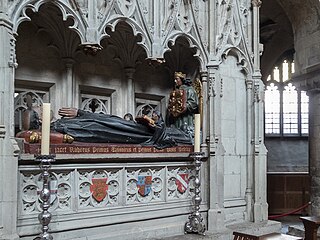
Rahere, or Raher or Raherius, was an Anglo-Norman priest and monk. He was a favourite of King Henry I and is most famous for having founded St Bartholomew's Priory and the Hospital of St Bartholomew in 1123.
William I of England has been depicted in a number of modern works.
King Stephen of England was a grandson of William the Conqueror, and has been depicted in various cultural works. He was King of England from 1135 to his death, and also the Count of Boulogne jure uxoris. His reign was marked by a civil war with his cousin and rival the Empress Matilda, in a period called the Anarchy which has been dramatized by Beth Flintoff in her play Matilda the Empress, first performed in November 2017 at St James's Church, Reading. Stephen was succeeded by Matilda's son, Henry II, the first of the Angevin kings.

One Corpse Too Many is a medieval mystery novel set in the summer of 1138 by Ellis Peters. It is the second novel in the Cadfael Chronicles, first published in 1979.
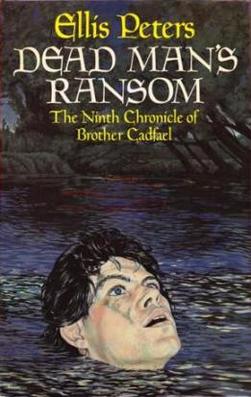
Dead Man's Ransom is a medieval mystery novel by Ellis Peters, first of four novels set in the disruptive year of 1141. It is the ninth in the Cadfael Chronicles, and was first published in 1984.
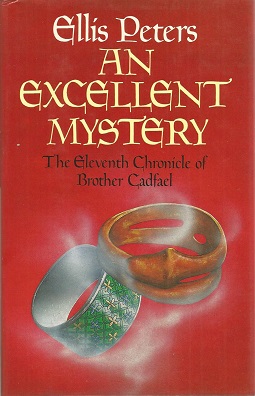
An Excellent Mystery is a mystery novel by Ellis Peters, the third of four set in the year 1141, when so much occurred in the period known as the Anarchy. It is the 11th in the Cadfael Chronicles, published in 1985.
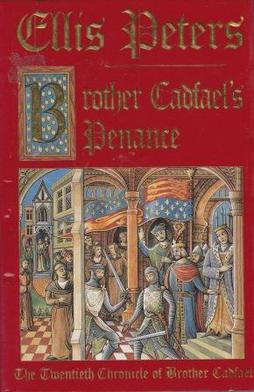
Brother Cadfael's Penance is a medieval mystery novel set in the autumn of 1145 by Ellis Peters. It is the last novel in the Cadfael Chronicles, first published in 1994.

Saint Peter's Fair is a medieval mystery novel by Ellis Peters, set in July – September 1139. It is the fourth novel in The Cadfael Chronicles, first published in 1981. The story occurs during The Anarchy, in the English town of Shrewsbury.
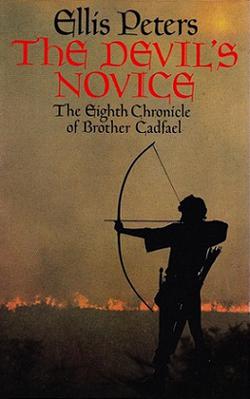
The Devil's Novice is a medieval mystery novel by Ellis Peters, set in autumn 1140. It is the eighth novel in the Cadfael Chronicles, first published in 1983.
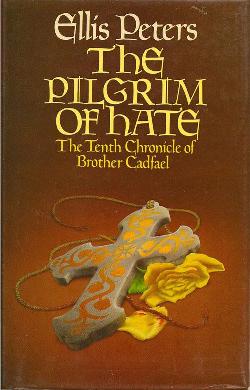
The Pilgrim of Hate is a medieval mystery novel by Ellis Peters, set in spring 1141. It is the tenth in the Cadfael Chronicles, and was first published in 1984.

The Confession of Brother Haluin is a medieval mystery novel set in the winter of 1142–1143 by Ellis Peters. It is the fifteenth novel in the Cadfael Chronicles, and was first published in 1988.
The Cadfael Chronicles is a series of historical murder mysteries written by the linguist-scholar Edith Pargeter (1913–1995) under the name Ellis Peters. Set in the 12th century in England during the Anarchy, the novels focus on a Welsh Benedictine monk, Cadfael, who aids the law by investigating and solving murders.
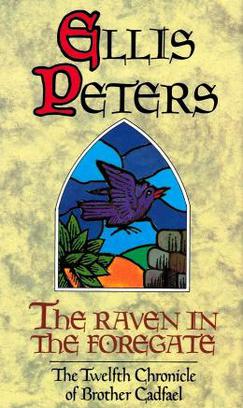
The Raven in the Foregate is a medieval mystery novel by Ellis Peters, fourth of the novels set in 1141, a year of great political tumult in the Anarchy. It is 12th of The Cadfael Chronicles, and first published in 1986.
Cultural depictions of the Anarchy, a long-running civil war in England between 1135 and 1153, has furnished the background of some major fictional portrayals. These include:
The 12th-century ruler Empress Matilda has been depicted in various cultural media.
References
- ↑ "Henry I of England" . Retrieved 2017-11-14.
- ↑ "Review of Henry I of England" . Retrieved 2018-12-03.
- ↑ Moss, Stephen (2 November 2016). "Henry I leads the charge to crown Reading as a cultural hotspot". The Guardian. Retrieved 2018-12-03.
- ↑ "Matilda The Empress" . Retrieved 2017-11-14.
- ↑ "Review of Matilda the Empress" . Retrieved 2018-12-03.
- 1 2 3 4 5 Nield (1925), p. 28-29
- ↑ McGarry, Daniel D., White, Sarah Harriman, Historical Fiction Guide: Annotated Chronological, Geographical, and Topical List of Five Thousand Selected Historical Novels. Scarecrow Press, New York, 1963 (pg. 59).
- ↑ Tate, Peter. The New Forest, 900 years after. London : Macdonald and Jane's, 1979. ISBN 9780354043625 (pg.124 )
- ↑ Lewis, Margaret. Edith Pargeter : Ellis Peters. Bridgend Seren 2003. ISBN 9781854113290 (pg. 91)